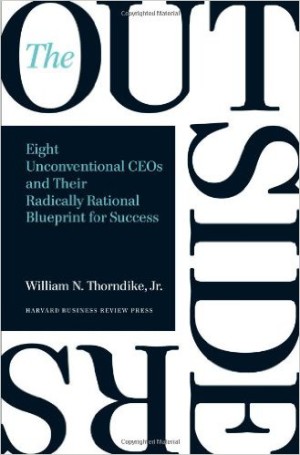As I wrote last week, one of the things I appreciated about The Outsiders by William Thorndike was the checklist of ten things every CEO should follow when deciding where to allocate resources. But several people who read my blog — many in some kind of ministry work — said the corporate language doesn’t easily transfer to the nonprofit world. So what can a nonprofit leader learn from the list?
Below are the the first two on the list with my own perspective on how nonprofit leaders must handle resource allocation.

1. The allocation process should be CEO led.
Resource allocation is about deciding where to invest your time, treasure and talent. If it’s not CEO led then there will always be confusion about what the organization is trying to achieve. The same holds true for church pastors, little league coaches, or executive directors of the city symphony. Your team, your employees, your donors and even the people you serve will all want to see consistency across the organization, and the only way to do that is if the CEO is the person pushing the agenda.
This doesn’t mean the leader isn’t listening to those in the organization; this rule isn’t meant to create a fiefdom. But if the leader doesn’t take the responsibility of resource allocation seriously, then competing interests (often well intentioned) within the nonprofit will keep things chaotic.
2. Start by determining the minimum acceptable return for an investment.
The currency used to define success in a corporate setting is profit, so returns are calculated in dollars. But what about nonprofit organizations? An organization needs to define what “profit” means for them before determining the return on investment. So start by defining how your nonprofit views success and how you measure success. It’s crucial you do the hard work on this or you’ll forever be shifting between goals.
Once that’s done you still have to figure out what is a minimally acceptable return on investment. This is where it gets really difficult for nonprofit organizations. If your “profits” are measured in social impact — whether community activism or spiritual growth or some other non-linear outcome — it’s tough to ignore the sole lost sheep for the sake of the ninety-nine. Every opportunity to serve becomes urgent and critical. As one pastor once told me when explaining why he was involved in so many church endeavors, “It’s hard to say no to God.”
The problem with operating that way is you can’t possibly do everything. So to avoid having your time, treasure and talent scattered in too many directions, you must focus on the investments that bring a minimally acceptable return. It might sometimes feel harsh, and is often angst ridden, but it is absolutely necessary.
Tomorrow I’ll post on a few more from the checklist. Let me know what you think!

